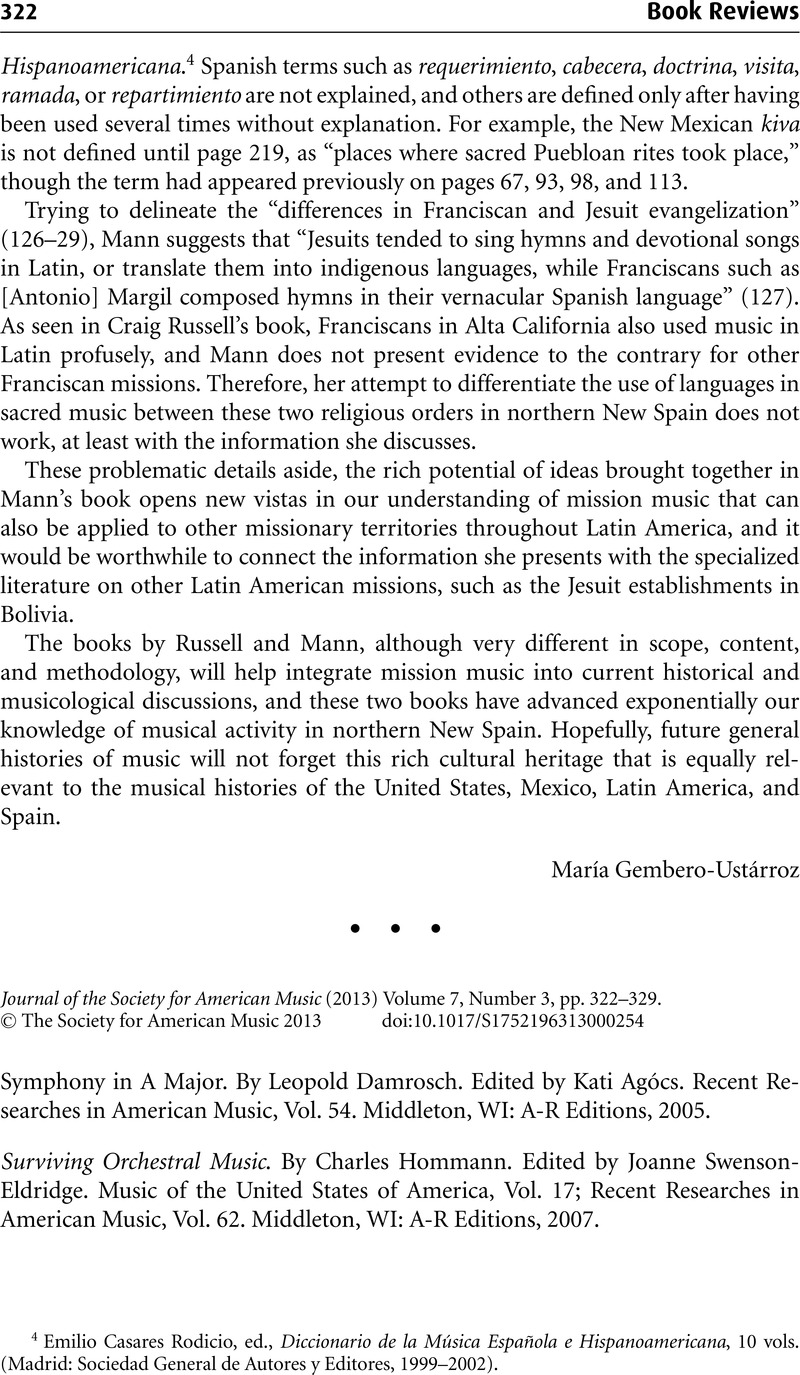No CrossRef data available.
Article contents
Symphony in A Major. By Leopold Damrosch. Edited by Kati Agócs. Recent Researches in American Music, Vol. 54. Middleton, WI: A-R Editions, 2005. - Surviving Orchestral Music. By Charles Hommann. Edited by Joanne Swenson-Eldridge. Music of the United States of America, Vol. 17; Recent Researches in American Music, Vol. 62. Middleton, WI: A-R Editions, 2007. - Symphony No. 2 in A Major (Spring), op. 34. By John Knowles Paine. Edited by John C. Schmidt. Recent Researches in American Music, Vol. 70. Middleton, WI: A-R Editions, 2010. - Symphony No. 2 in D Minor, op. 24 (“Jullien”). By George Frederick Bristow. Edited by Katherine K. Preston. Music of the United States of America, Vol. 23; Recent Researches in American Music, Vol. 72. Middleton, WI: A-R Editions, 2011.
Published online by Cambridge University Press: 13 August 2013
Abstract

- Type
- Book Review
- Information
- Copyright
- Copyright © The Society for American Music 2013
References
1 An edition of Hommann's chamber works, edited by Swenson-Eldridge and John Graziano, appeared in the Recent Researches in American Music series in 1998.
2 There were in fact previous examples of a duple-meter scherzo with a tripping dotted rhythm, though none, as far as I know, in symphonies. The Scherzino in Schumann's Faschingsschwank aus Wien is an example; and the Scherzo of his Second Symphony is in duple meter, though it lacks the dotted rhythm.
3 Beethoven sometimes makes the leading tone a consonant minor triad: see the Scherzo of the Piano Sonata in A major, Op. 2, no. 2, where G♯ minor (iii/V) is tonicized, briefly.
4 This situation has begun to change. See Shirley, Wayne D., “Leopold Damrosch as Composer,” in European Music and Musicians in New York City, 1840–1900, ed. Graziano, John (Rochester, NY: University of Rochester Press, 2006), 92–113Google Scholar; and Spitzer, John, ed., American Orchestras in the Nineteenth Century (Chicago: University of Illinois Press, 2012)CrossRefGoogle Scholar.
5 This was the subtitle of George Martin's multigenerational biography, The Damrosch Dynasty: America's First Family of Music (Boston, MA: Houghton Mifflin, 1983).
6 See Bohlman, Phillip V. and Holzapfel, Otto, eds., Land Without Nightingales: Music in the Making of German America (Madison, WI: Max Kade Institute for German American Studies, 2002)Google Scholar. The “music of emigration” is music from the German side of the “German-American hyphen.” It “engage[s] with . . . and describes the conditions of an emigrant culture, one in which the exchange between the Old World and the New is already in play” (ibid., 16). This is in contrast to the more assimilated “music of immigration.”
7 This edition was reprinted by Da Capo Press in the 1970s, giving much greater access to the work around the time of the U.S. Bicentennial.
8 Hommann: 72 pages; Bristow: 91 pages. In both cases the editors have published lengthy studies on these topics as journal articles elsewhere.




